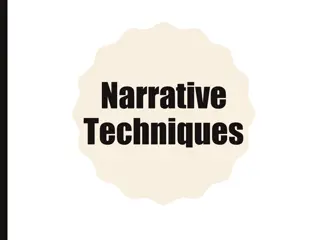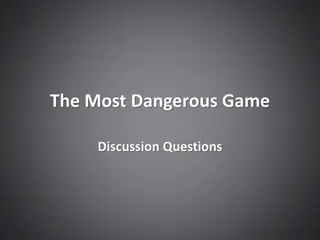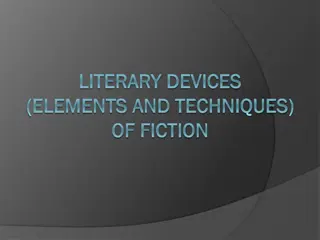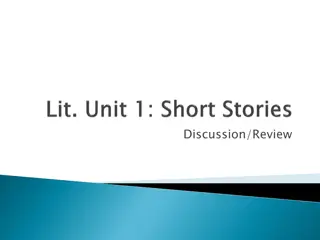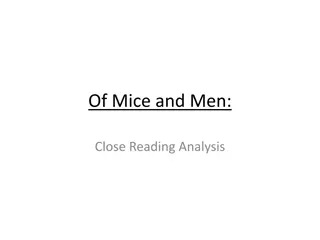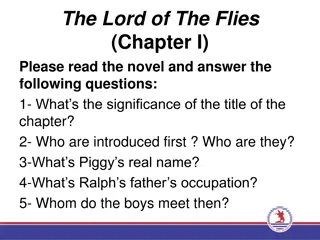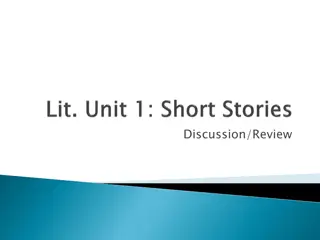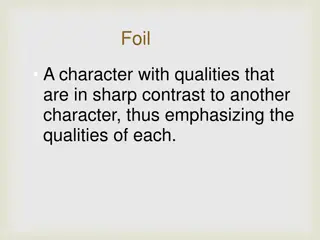Foreshadowing
Foreshadowing is a literary technique where authors use hints or clues to suggest future events in a story. It builds suspense, engages readers, and makes the narrative more believable. Analyzing foreshadowing involves looking for clues in dialogue and descriptions to predict what might happen next. This technique helps in creating suspense and engaging readers in the storyline.
Download Presentation

Please find below an Image/Link to download the presentation.
The content on the website is provided AS IS for your information and personal use only. It may not be sold, licensed, or shared on other websites without obtaining consent from the author.If you encounter any issues during the download, it is possible that the publisher has removed the file from their server.
You are allowed to download the files provided on this website for personal or commercial use, subject to the condition that they are used lawfully. All files are the property of their respective owners.
The content on the website is provided AS IS for your information and personal use only. It may not be sold, licensed, or shared on other websites without obtaining consent from the author.
E N D
Presentation Transcript
Foreshadowing: is an author s use of hints or clues to suggest events that will occur later in the story. Not all foreshadowing is obvious. Frequently, future events are merely hinted at through: Dialogue Description Attitudes and reactions of the characters
Foreshadowing: Frequently serves two purposes: 1. It builds suspense by raising questions that encourage the reader to go on and find out more about the event that is being foreshadowed. 2. It is also a mean of making a narrative more believable by partially preparing the reader for events which are to follow.
Foreshadowing: In literature, foreshadowing usually consist of only one or two sentences, and is especially effective when ending a scene or chapter. An Example of Foreshadowing: Sam wished he could rid himself of the sick feeling in his gut that told him something terrible was going to happen, and happen soon.
Analyzing Foreshadowing: 1.Think about plot events 2.Look for clues in dialogue or description 3.Predict what will happen next
Analyzing Foreshadowing: Ari and his dad were driving home from soccer practice when snow began. Mr. Gold switched on the windshield wipers and frowned. I wish I d had a chance to get new tires, he said. Ours are really worn out. 1. What is the plot so far? 2. Are there any clues in the dialogue or descriptions that you think might be foreshadowing? 3. What do you think will happen next?
Foreshadowing: Can help to build suspense in literature. When analyzing suspense: 1. Examine your feelings as you read. 2. Identify the rising action of the plot. 3. Focus on the main questions you have regarding the story s outcome.
Foreshadowing & Suspense: By now the snow was falling so hard that the windshield wipers couldn t keep up. Trying to climb Bear Hill, the car fishtailed left, then right. I don t know if we can make it up, muttered Mr. Gold, shifting into low gear. Suddenly, at the top of the hill, an 18-wheeler truck jackknifed into their lane. Mr. Gold slammed on his brakes, but nothing happened. What are your feelings about the situation the characters are facing in this scenario? What else might happen to further increase suspense as the story moves toward its climax? Do you have any burning questions in your mind about Ari and his father? 1. 2. 3.


